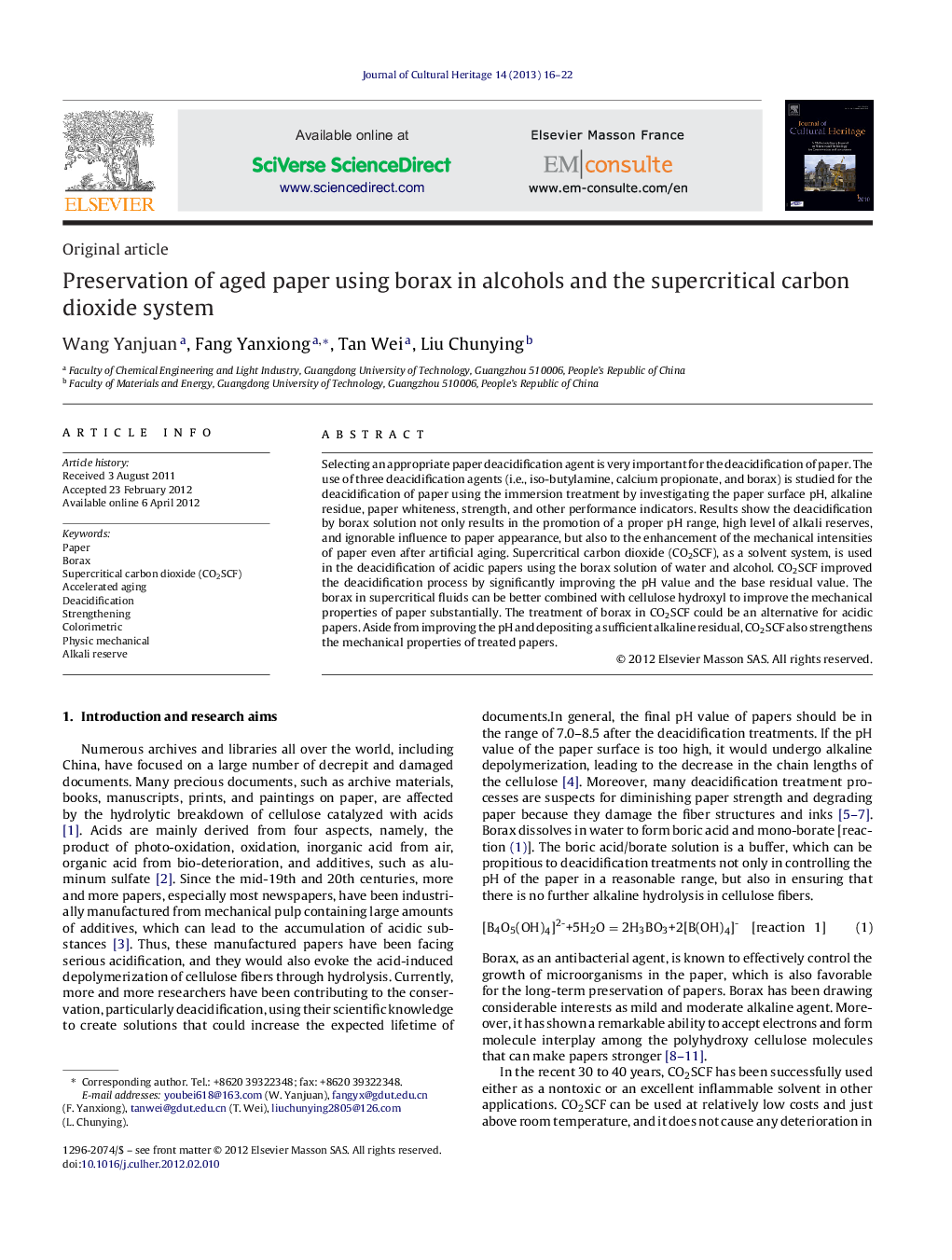| Article ID | Journal | Published Year | Pages | File Type |
|---|---|---|---|---|
| 1038277 | Journal of Cultural Heritage | 2013 | 7 Pages |
Selecting an appropriate paper deacidification agent is very important for the deacidification of paper. The use of three deacidification agents (i.e., iso-butylamine, calcium propionate, and borax) is studied for the deacidification of paper using the immersion treatment by investigating the paper surface pH, alkaline residue, paper whiteness, strength, and other performance indicators. Results show the deacidification by borax solution not only results in the promotion of a proper pH range, high level of alkali reserves, and ignorable influence to paper appearance, but also to the enhancement of the mechanical intensities of paper even after artificial aging. Supercritical carbon dioxide (CO2SCF), as a solvent system, is used in the deacidification of acidic papers using the borax solution of water and alcohol. CO2SCF improved the deacidification process by significantly improving the pH value and the base residual value. The borax in supercritical fluids can be better combined with cellulose hydroxyl to improve the mechanical properties of paper substantially. The treatment of borax in CO2SCF could be an alternative for acidic papers. Aside from improving the pH and depositing a sufficient alkaline residual, CO2SCF also strengthens the mechanical properties of treated papers.
